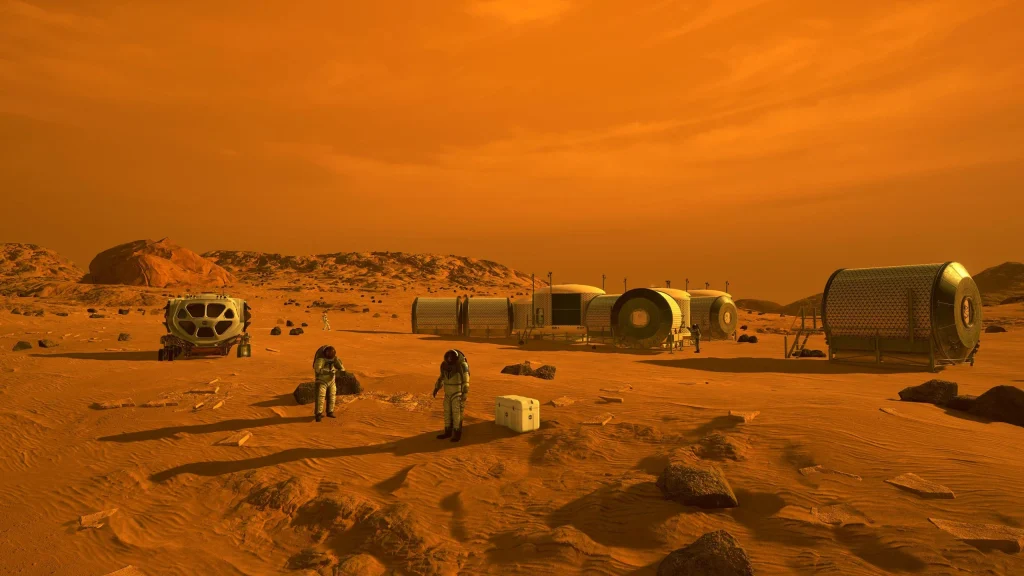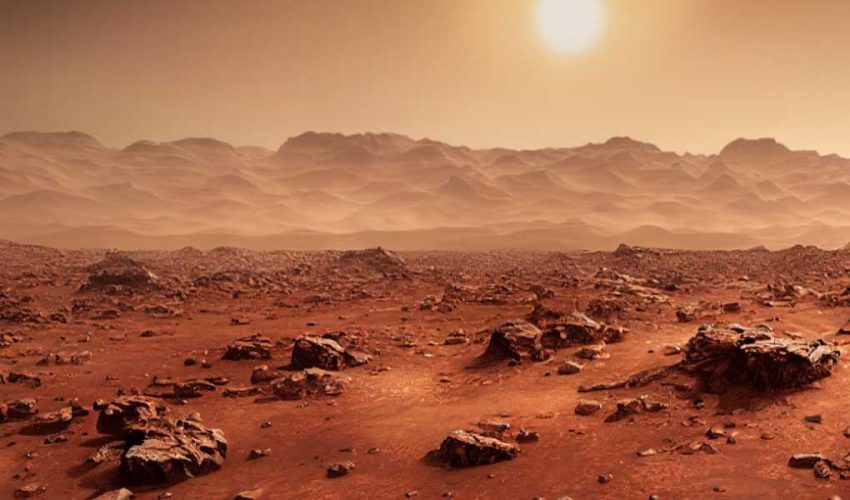Mars, the fourth planet from the Sun, has long fascinated humanity, earning its nickname the “Red Planet” due to its distinctive reddish hue. With its thin atmosphere, dusty landscapes, and frigid temperatures, Mars presents a unique challenge and opportunity for exploration. As we look toward the future of space travel, Mars stands out as the ultimate frontier for several compelling reasons, including its potential for exploration, scientific discovery, and human settlement.

1. Proximity to Earth
Mars is relatively close to Earth compared to other planets in our solar system. At an average distance of about 225 million kilometers, it is within reach of current space travel technology.
Robotic Missions
Numerous robotic missions have been launched to Mars over the years, including orbiters, landers, and rovers. Notable missions such as NASA’s Perseverance Rover and the European Space Agency’s ExoMars have yielded invaluable data on the planet’s surface conditions, climate, and potential for life. These robotic explorers are essential for paving the way for future human missions by identifying safe landing zones and locating resources like water ice.
Human Exploration
Mars is considered the most viable candidate for human exploration beyond Earth. Unlike gas giants, Mars has a solid surface that can support human activities. Organizations such as NASA and SpaceX are actively planning crewed missions to Mars within the next decade, marking a significant step toward human presence on another planet.
2. Insights into Life
One of science’s most profound questions is whether life exists beyond Earth. Mars may hold answers.
Evidence of Past Life
Mars was once a warmer planet with liquid water on its surface, which could have supported microbial life billions of years ago. Current exploration efforts focus on finding signs of past life through fossilized remains or chemical signatures left by ancient organisms.
Potential for Present Life
Despite its harsh surface conditions, there is speculation that microbial life could exist underground in warmer environments shielded from radiation. Future missions may include drilling into Martian soil to search for these hidden life forms.

3. A Future Second Home
As Earth grapples with issues like climate change and resource depletion, Mars emerges as a potential new home for humanity.
Earth-like Features
Mars shares several characteristics that make it suitable for colonization:
- Day Length: A Martian day (sol) is only slightly longer than an Earth day, facilitating human adaptation.
- Seasons: Mars experiences seasons similar to Earth due to its axial tilt.
- Water Resources: Frozen water exists at the poles and beneath the surface, which could be vital for drinking water, agriculture, and fuel production.
Terraforming Potential
In the long term, scientists envision terraforming Mars—transforming it into a more Earth-like environment through processes that could thicken its atmosphere and increase temperatures. While still theoretical, this concept highlights Mars’s potential as a second home for humanity.
4. Driving Scientific Innovation
Exploring Mars pushes scientific boundaries and fosters technological advancements necessary for survival in space.
Technological Advancements
Mars missions require cutting-edge technologies that can also benefit life on Earth. Innovations in renewable energy systems, advanced materials, and sustainable life-support mechanisms developed for Martian exploration can have terrestrial applications.
Understanding Planetary Evolution
Studying Mars provides insights into planetary formation and evolution. Its geological features serve as a time capsule of our solar system’s early history, helping scientists draw comparisons with Earth to better understand our own planet’s past and future.
5. A Test of Human Resilience
The endeavor to reach Mars represents not only a scientific mission but also a testament to human endurance and collaboration.
Overcoming Challenges
Astronauts will face numerous challenges during their journey to Mars, including long-duration space travel and living in confined environments while managing risks such as radiation exposure and microgravity effects. Building sustainable habitats on Mars will require teamwork and innovative problem-solving skills.
Global Collaboration
Mars exploration serves as a platform for international cooperation. Just as the International Space Station symbolizes global unity in space endeavors, collaborative missions to Mars could foster peaceful relations among nations working towards common goals.
6. Challenges Ahead
Despite its allure, exploring Mars presents significant challenges that must be addressed.
Distance and Duration
Reaching Mars takes approximately six to nine months, depending on orbital alignments. This extended travel time raises concerns about astronaut health and communication delays with mission control.

Harsh Conditions
Mars has a thin atmosphere primarily composed of carbon dioxide and experiences extreme temperatures that can plunge below -80 degrees Fahrenheit (-62 degrees Celsius). These factors necessitate protective gear and habitats for human survival.
Financial Considerations
The cost of sending missions to Mars is substantial. Developing rockets, landers, and life-support systems requires significant investment; however, companies like SpaceX are working on reducing costs through reusable technology.
Conclusion
Mars represents humanity’s next great frontier due to its proximity, potential for life discovery, suitability for colonization, and ability to inspire scientific advancement. As we prepare for future explorations of the Red Planet, we are not merely learning about another celestial body; we are also gaining insights into our own existence and capabilities.
The journey to Mars challenges us to expand our horizons while fostering innovation and global cooperation. Ultimately, Mars symbolizes hope and curiosity—a testament to humanity’s relentless pursuit of knowledge beyond our home planet. As we look toward the stars, Mars stands as a beacon of possibility in our quest for exploration and understanding of the universe.










